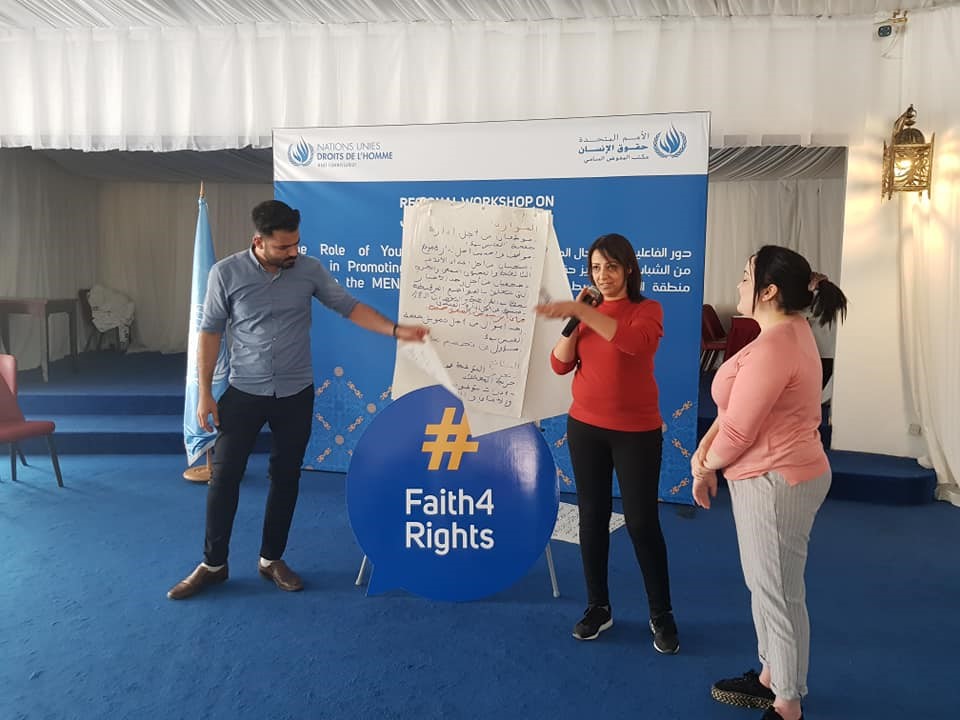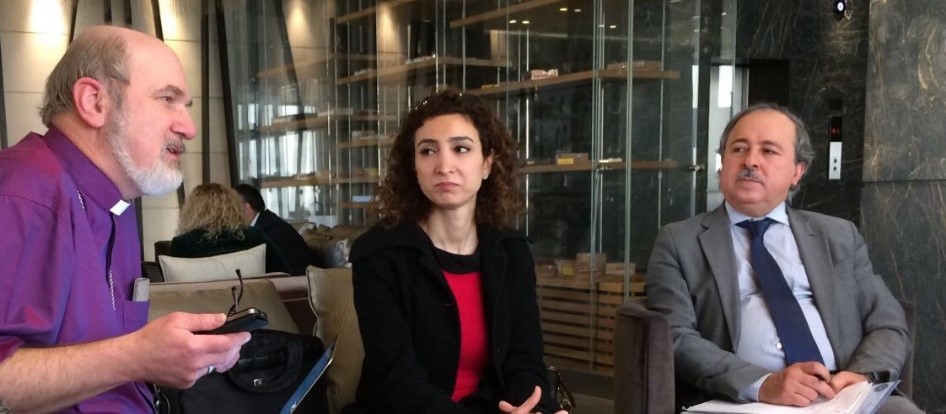Annex: Cases to debate
#Faith4Rights toolkit
Context
The whole conception of the #Faith4Rights toolkit is interactive and participatory. In this annex, several short cases to debate (see scenarios A to G) and longer moot cases (see here) are proposed, which continue in the same direction.
The rationale of the cases to debate is to shed practical light on the 18 modules of the #Faith4Rights toolkit. In real life situations, there are no boundaries between the 18 commitments on “Faith for Rights”. The overlapping between the different areas of human rights impact and responsibilities of faith actors is a fact of life. Such overlapping could blur the vision of faith actors and complicate their choices. Instead, debating true stories of tensions among rights, conflicting duties and competing priorities prepares faith actors for making difficult judgements as wisely as possible, inspired by lessons learned from the selected cases. Ultimately, all the seeds of wisdom planted across the preceding 18 Faith4Rights modules may blossom through the following cases to debate.
The list of cases remains flexible and expandable to better reflect the socio-cultural contexts of the peer-to-peer learning process in an engaging and participatory manner, particularly for the youth.
Introducing the cases to debate
 These cases to debate could be seen as additional thematic modules serving a triple objective. First, they expand the thematic scope of the training, drawing upon the 18 commitments in a manner that is not strictly limited to their subject matter. Second, they address the intersectionality between the 18 commitments. In real life situations, challenges do not follow any conceptual clustering. The interaction between rights and beliefs quite often raise a number of issues that involve numerous commitments. This creates situations of competing rights and conflicting responsibilities that are quite interesting and instructive to discuss. Third, this type of exercise improves the expertise of the faith actors in a human rights-based approach. Moot cases actually prepare faith actors to real life situations and enhances their skills to manage them towards the shared aims of “Faith for Rights”.
These cases to debate could be seen as additional thematic modules serving a triple objective. First, they expand the thematic scope of the training, drawing upon the 18 commitments in a manner that is not strictly limited to their subject matter. Second, they address the intersectionality between the 18 commitments. In real life situations, challenges do not follow any conceptual clustering. The interaction between rights and beliefs quite often raise a number of issues that involve numerous commitments. This creates situations of competing rights and conflicting responsibilities that are quite interesting and instructive to discuss. Third, this type of exercise improves the expertise of the faith actors in a human rights-based approach. Moot cases actually prepare faith actors to real life situations and enhances their skills to manage them towards the shared aims of “Faith for Rights”.
The following is a debating-exercise aiming at exploring the content and dynamics of the moving boundaries among several “Faith for Rights” commitments. The facilitator could divide this exercise into four phases.
First phase: Identifying limits of the exercise (10 to 15 minutes)
- Participants are divided into groups formed of minimum two up to maximum four members.
- The case scenario is handed to groups and each small group shall collectively identify the relevant commitments to the case under consideration. (5 minutes)
- A short full group plenary discussion (maximum 10 minutes) shall define the commitments that will be discussed in phase two.
Second phase: Preparation for debate (20 to 30 minutes)
- Between 20 and 30 minutes shall be left to the participants to discuss the case scenario within each team. Participants explore the issues based on the file of sources provided with the case. They will determine a list of issues that the facts of the case raise in light of the 18 commitments on “Faith for Rights”. However, participants are strongly encouraged to add resources on their own, particularly from within their respective faith texts and domestic/regional jurisprudence. The facilitator would encourage participants to transform the issues they identified into specific questions that will form the basis of the third phase of this exercise, that of debating the case.
- Each group shall prepare arguments representing both sides of the case. All participants must thus be ready to defending contradictory judgements on the same facts, not what they personally think is right.
Note for facilitators: In case the factual scenario is a short one, and the group of trainees are limited in number (10 or less), a facilitator could assign the whole case, with all issues raised, to all groups. If the factual scenario is longer and the group of trainees is more than 10 participants, a facilitator could assign one specific issue (or more) of the case scenario to two groups, and other issue to other two groups. This aims at avoiding the repetition and redundancy in the debating phase that will follow.
Third phase: Debating phase roughly 30 to 40 minutes)
 The facilitator shall assign randomly roles to each group to defend one side or another in a way that one group defends a view and the other responds in disagreement. Each group shall present its views within 2 or 3 minutes.
The facilitator shall assign randomly roles to each group to defend one side or another in a way that one group defends a view and the other responds in disagreement. Each group shall present its views within 2 or 3 minutes.
Note for facilitators: The debate is not meant to end by a winner and a loser, the whole idea is to make sure that arguments on both sides are well represented. Therefore, there is no need to determine who was better from the arguing team, neither by the facilitator nor by the rest of the participants. The question should rather be to ensure that all aspects of the case are considered.
Fourth phase: Summing up discussion (roughly 20 minutes)
The facilitator aims at building upon the points that were raised and shall animate a group discussion. It is important to show that it is always possible to argue a specific case in different ways, sometimes even contradictory. This phase results in listing on a board a list of lessons learned from the case.
Learning objectives
- Participants realize how real-life situations related to “faith” and “rights” are often at the border line between competing norms and priorities and that this requires from them humility, thoughtfulness and constant re-evaluation on a case-by-case basis.
- Participants practice dynamic role play simulations of real or hypothetical situations, further enhancing the range of critical thinking and communications skills they have developed along the preceding modules.
- Participants get inspired by landmark decisions of different authorities on deeply divisive social issues, some of which are susceptible to conflicting views even among specialists.